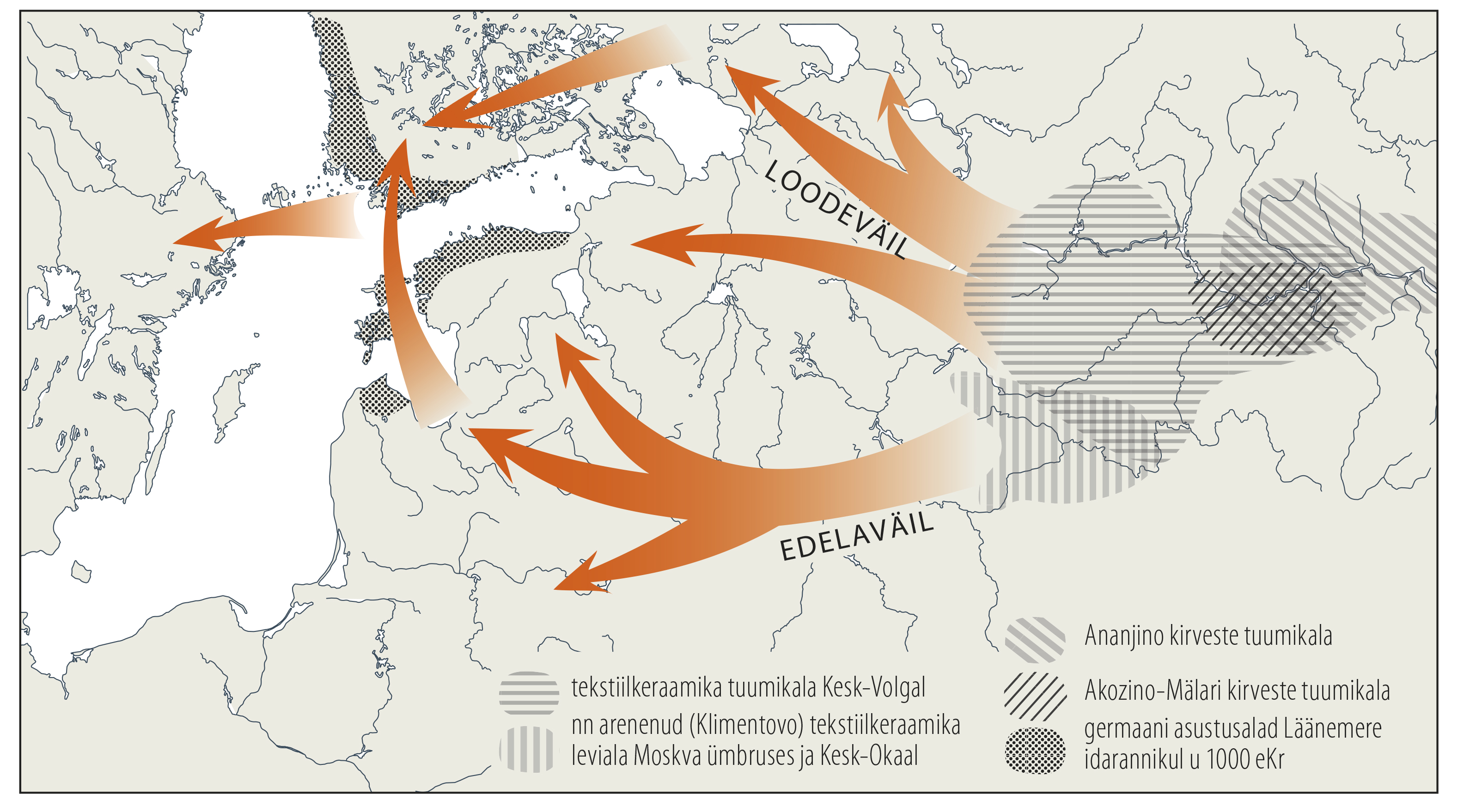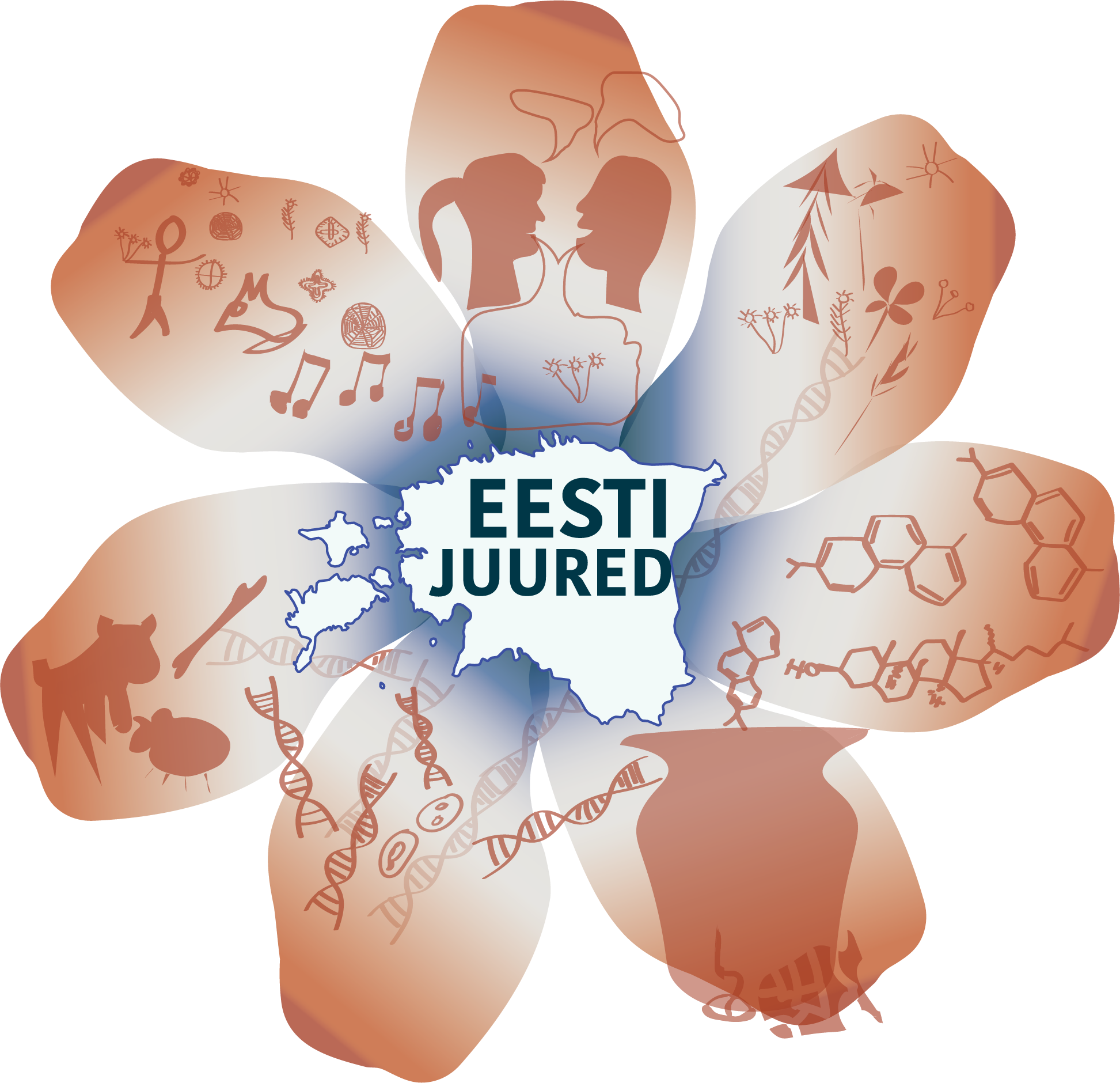What is meant by the so-called second coming of Finnic is the long-term habitational and cultural process, during the course of which a language that developed in a limited region – that we call Late Proto-Finnic – and a culture spread everywhere where Finnic nations are known to have lived in the historical era (excl. the South Estonian and Livonian language areas).
It is presumed that Late Proto-Finnic could not have developed in a similar fashion across all of the extensive area, whither the “first coming”, that is, immigration from the Volga-Oka region had brought different West Uralic tribes, but in stead in a single delimited region open to contacts. The presumption is based on the logic of language development, that phonological changes can not develop and loanwords spread over a territory that is at the same time large, but sparcely populated. Rather, such changes have initially taken place in a single smaller region and from there spread around with the people (fig. 1).
“The second coming” began in North Estonia during the Early Roman Iron Age (the first centuries of the Common Era), the centre being the coastal region of Virumaa. This process is seen in the archaeological material in the spread of burial places and material culture characteristic of the place of origin to the south, east, north and west. The process consisted of the slow spread of single-farm habitation characteristic of the North Estonian agriculture: among the local, sparcely populated and apparently mixed economy-based Finnic population arrived families of settlers who brought with them their dialect, (richer) material and spiritual culture and (more successful) economic knowledge. These proved to be prestigious for the locals and thus easily (as well as necessarily) acquired. Thus, the Late Proto-Finnic of the North Estonians spread markedly faster and farther than what would have been possible only through the physical procreation and relocation of people.
The expansion of the Finnic language and culture was halted only at the beginning of the II millennium AD due to the expansion of Baltic and Slavic tribes to the regions formerly inhabited by Finnic and West Uralic tribes.



